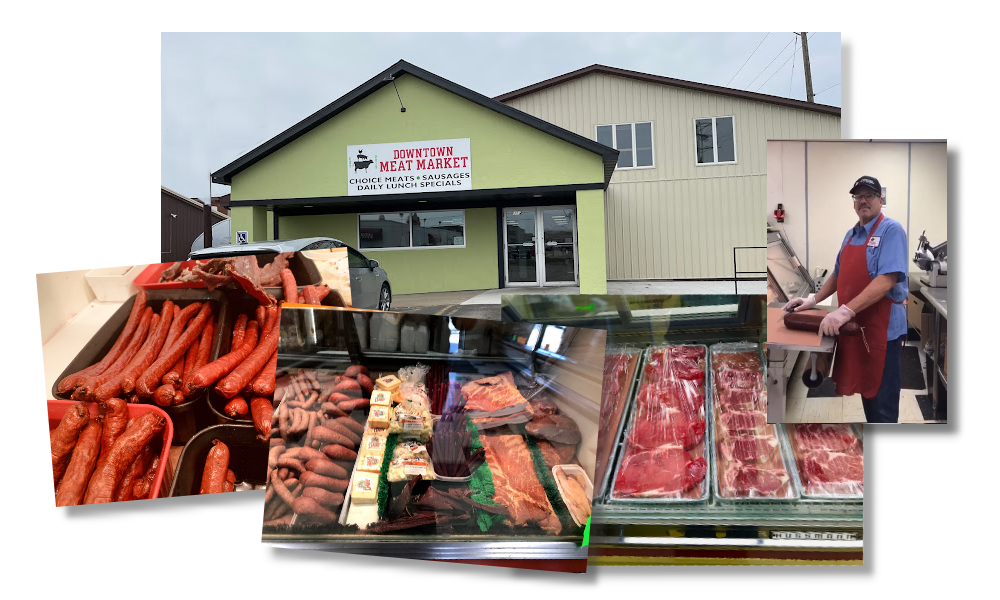Uncover the Art of the Butcher's Cut in a Modern Meat Market
In the ever-evolving landscape of modern-day meat markets, the butcher's cut has transcended its traditional origins, combining age-old workmanship with modern practices. What genuinely sets the contemporary butcher apart is their capacity to forge a much deeper connection in between customers and the beginnings of their meat.
Advancement of Butchery Techniques
The evolution of butchery techniques reflects an abundant tapestry of advancement and adjustment driven by innovations in modern technology, adjustments in consumer demand, and a deeper understanding of meat science. Historically, butchery was a craft gave via generations, with methods honed over centuries to take full advantage of return and flavor. The commercial change ushered in automation, transforming typical techniques and enabling large-scale processing.
The mid-20th century saw butchery methods further refined by clinical insights right into muscle biology and meat aging, enhancing both tenderness and preference. Advancements like vacuum packaging and refrigeration extended product shelf-life, allowing butchers to diversify offerings and boost quality assurance. This duration also noted the surge of specific tools, such as band saws and meat slicers, which enhanced precision and efficiency in meat processing.

The 21st century has introduced electronic modern technology right into the butchery realm. Digital systems now assist in monitoring pet provenance and enhancing cuts to satisfy particular consumer choices. Furthermore, a rebirth in artisanal butchery has emerged, mixing conventional skills with modern knowledge to provide to customers looking for ethical and sustainable meat alternatives. This development underscores a vibrant interaction between custom and technology, meeting contemporary needs while protecting the craft's heritage.
Understanding Meat Cuts
Recognizing the ins and outs of meat cuts is vital for both butchers and consumers seeking quality and value. For butchers, precise cuts show ability and respect for the craft, making sure very little waste and optimum return.

Understanding muscular tissue composition is crucial; muscles used a lot more often by the animal have a tendency to be harder and are best fit for sluggish cooking methods, while less-used muscles, like those found in the loin, are more tender and perfect for grilling or roasting. Familiarity with these differences empowers consumers to make educated choices, boosting their culinary ventures.
Selecting Top Quality Meat
Selecting the right meat includes even more than just choosing an aesthetically attractive item from the display screen. The art of picking top quality meat calls for a discerning eye and knowledge of details characteristics that symbolize freshness and excellence.
Second of all, take into consideration the marbling, which describes the white flecks of fat within the muscle. Proper marbling is an essential indicator of inflammation and flavor, as it melts throughout cooking, boosting the meat's juiciness. Remember, higher marbling frequently correlates with exceptional top quality cuts, such as USDA Prime.
Appearance is another vital variable; meat ought to really feel solid to the touch, not slimy or extremely soft. Furthermore, be conscious of the aroma. Fresh meat ought to have a clean, neutral scent, without any sour or repulsive smells.
Coupling Cuts With Cooking Techniques

Conversely, harder cuts like brisket and chuck roast are abundant in collagen, which damages down right into gelatin when prepared gradually. These cuts are perfect for braising or slow roasting, permitting the meat to soften over time and develop deep, intricate tastes. In a similar way, cuts such as brief browse this site ribs and pork shoulder get on well with slow-cooking approaches, where prolonged cooking times transform their durable appearances into succulent recipes.
Lamb shanks and oxtail, which call for extended cooking to tenderize, are perfect prospects for cooking or slow-moving see here simmering. These techniques coax out rich, hearty tastes while maintaining wetness. By comprehending the one-of-a-kind features of each cut, chefs and home cooks alike can raise their cooking productions, making sure each dish is both pleasing and remarkable.
The Butcher's Function Today
Navigating the developing landscape of the contemporary meat market, the butcher's duty today extends beyond plain prep work of cuts. Contemporary butchers are culinary artisans, educators, and advocates for sustainable practices. They link the space in between the ranch and the fork by ensuring moral sourcing, understanding pet husbandry, and prioritizing transparency in the supply chain. This change reflects the growing customer demand for top quality over amount, where provenance and pet welfare are extremely important.
In enhancement to crafting specific cuts, butchers currently engage directly with consumers, offering cooking advice and tailoring options to fit private demands and preferences. Their knowledge in meat aging, marbling, and taste accounts empowers customers to make informed decisions, boosting their cooking experiences. This customized solution exemplifies the butcher's evolving role as a relied on consultant in the kitchen.
Additionally, butchers are pivotal in decreasing waste, making use of whole pets to develop varied products such as sausages and stocks. This comprehensive strategy not only appreciates the pet but also aligns with contemporary sustainability goals. This way, the contemporary butcher symbolizes both tradition and development, adapting to an ever-changing market while preserving the virtuosity and honesty see of their craft.
Final Thought
Mastery in recognizing varied meat cuts and quality indications encourages butchers to provide educated referrals, lining up details cuts with optimum cooking approaches. By recognizing historical methods while embracing contemporary demands, the butcher's duty stays essential in today's innovative meat market.